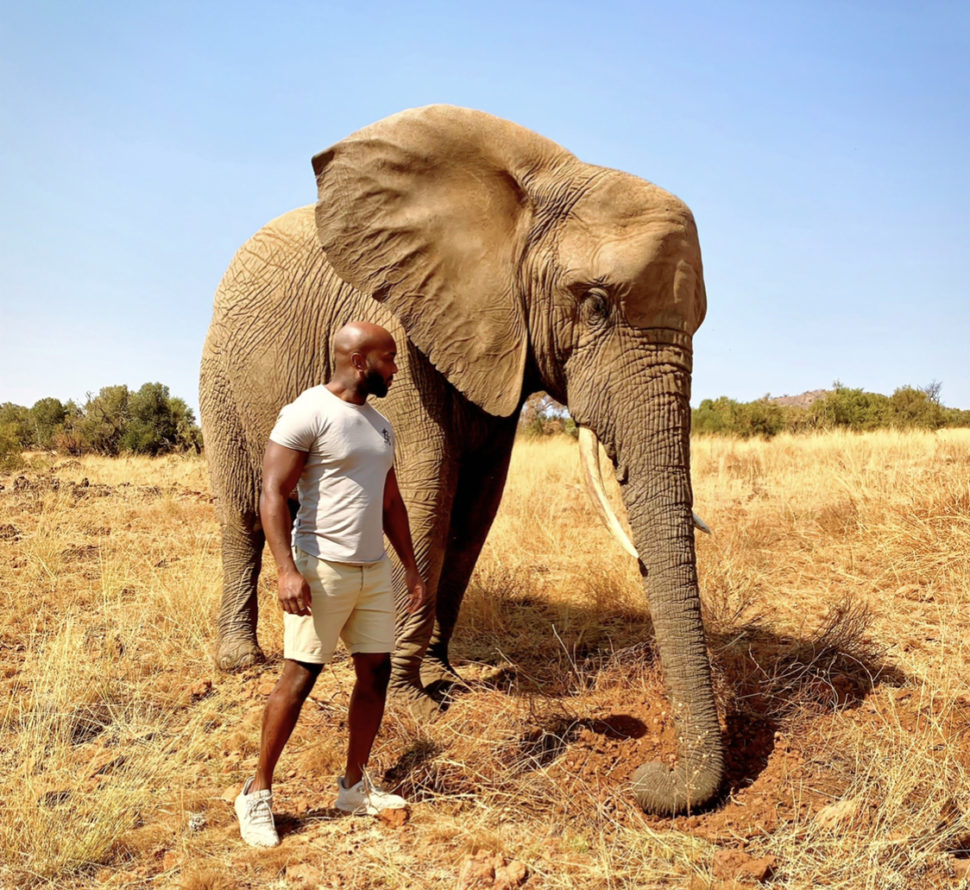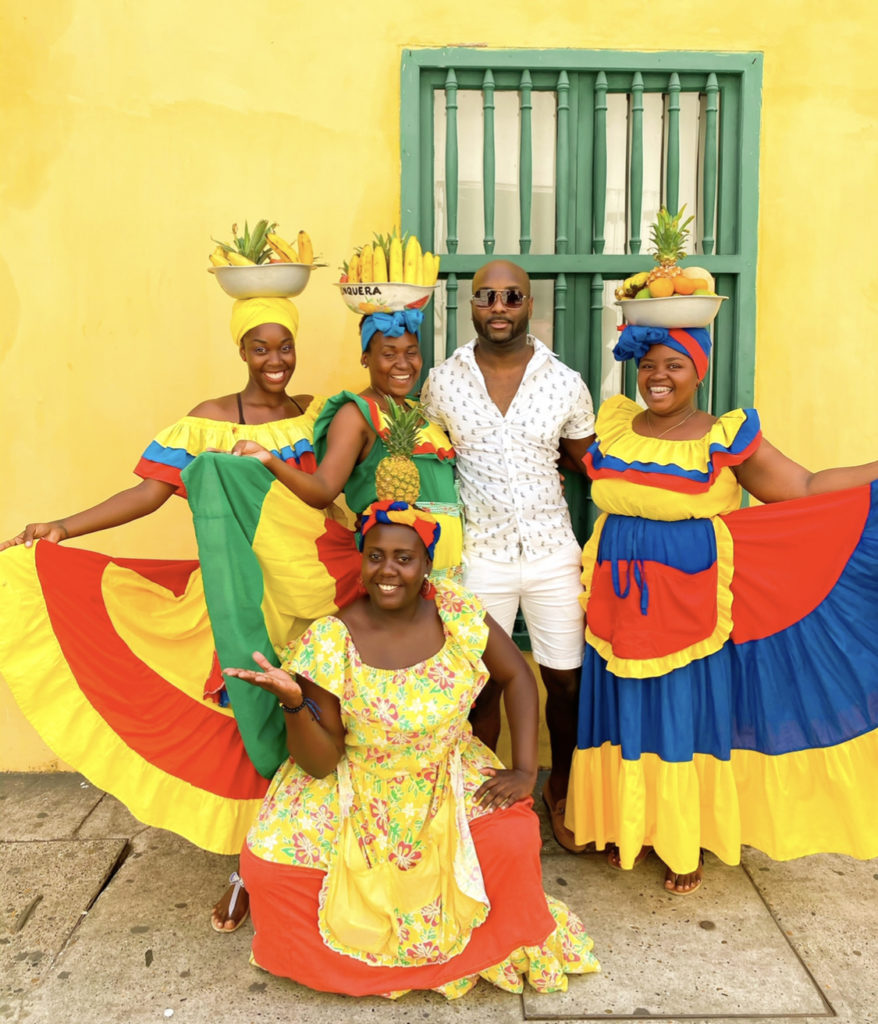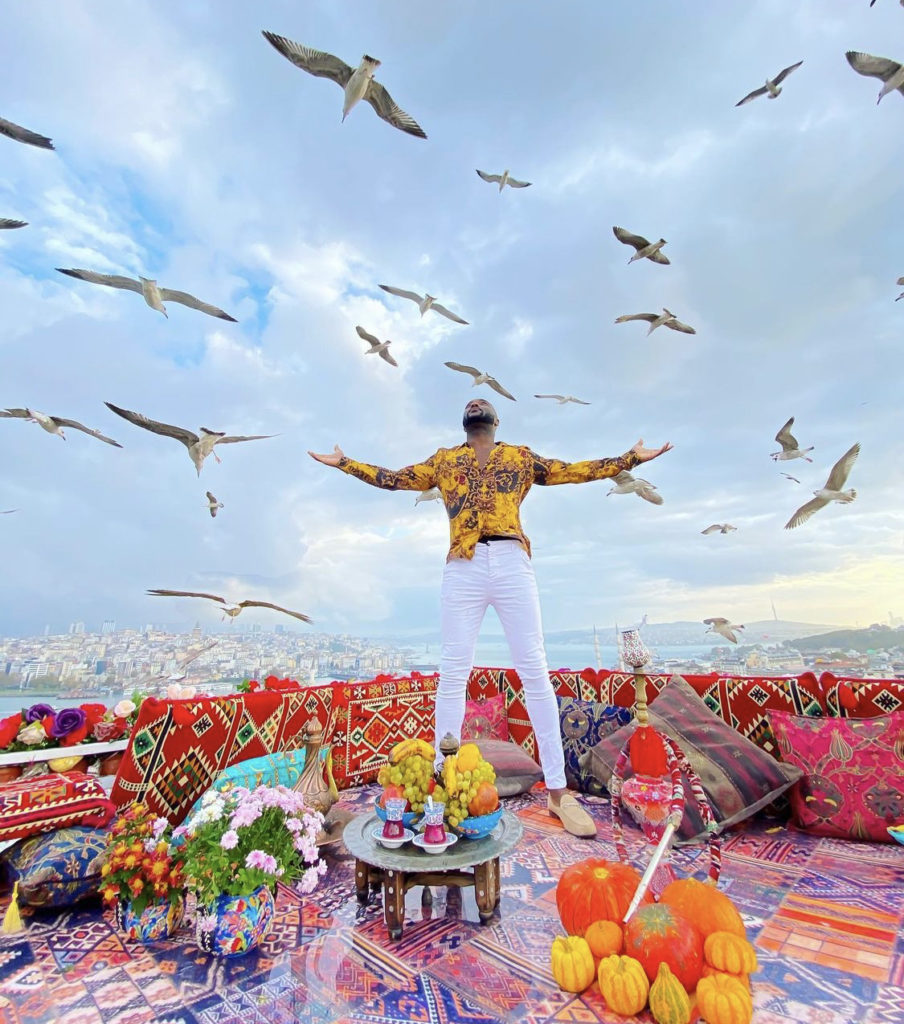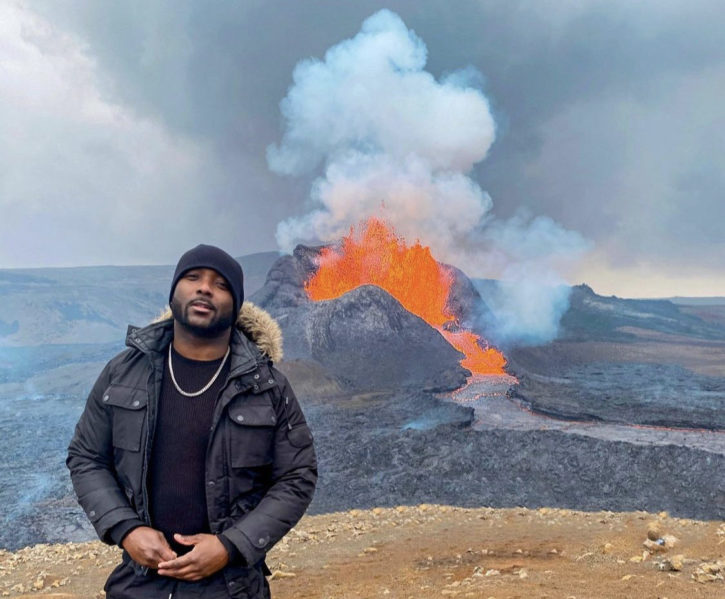Otis Dublin was only six years old when the Soufrière Hills volcano began erupting on the island of Montserrat in July 1995, three years after heightened seismic activity. His family moved further north as the situation progressively worsened. At times, the atmosphere was menacing as the sun met the ash clouds to produce an orange glow. Dublin remembers running down the street with his mother, not knowing what to do and the sounds of screaming after a deadly eruption.
“I was on a lunch break [at school] and I was inside, but you could hear the kids outside screaming because it was a massive eruption,” he shared with Travel Noire. “So that was obviously scary when you’re a little kid, not really knowing what to expect. Volcanoes were new to everybody. But there were definitely times when I thought I would die. There were times when the ash cloud would block out the sunlight, and you couldn’t see your hand in front of your face; midday would turn to night.”
Dublin grew up in the capital, Plymouth, which was eventually buried under 39 feet of mud rendering the southern part uninhabitable.
Montserrat is a British Overseas Territory, so he and his immediate family were able to move to the United Kingdom for a fresh start. One holdover from his former life was a love of flying. Dublin’s sister worked for regional airline LIAT, so travel was a major part of his formative years.
One of his earliest memories is visiting Canada and experiencing winter for the first time. His longtime goal was to pursue aviation as a pilot, a career where training is notoriously expensive. To save up, Dublin applied for a flight attendant position with the now-defunct British Midland Airways Limited. He later moved to Virgin Atlantic, where he has worked for the past 13 years. It’s a career that has helped him explore over 75 countries, always armed with his trusty camera. As a lover of nature and animals, one of the coolest trips he has ever taken was to South Africa.

“Being next to giant elephants is just insane because they’re so majestic but humbling at the same time,” he said. “They’re so big, and they could move so quickly and do so much damage, but they’re so calm as well. I also have been around baby lion cubs. That was another incredible experience for me, just because you know what they’ll grow up to be. This is in an environment that is a conservatory, so it’s not exploiting these animals.”
Dublin is all about the vibe when traveling and for him, Colombia fits that criteria. He has visited six times so far and looks forward to more trips to the South American country. Among his favorite features are the warm and friendly people, amazing cuisine, and electric nightlife. And as much as he adores Medellín, the capital of the Antioquia province, Dublin encourages travelers to explore other parts as well.
“A lot of people go to Cartagena. You’ve got San Andrés, which is a beautiful island just off of Colombia, with amazing beaches and a natural aquarium where you can swim with stingrays. Colombia on a whole is just a beautiful country. I’d recommend anyone to go there.”

On the flip side, Argentina did not pass Dublin’s vibe check although it did have some redeeming qualities.
“That was the one place that I definitely felt unwelcomed. The other thing about Argentina was it didn’t give me much of a South American feel. I got more of a European vibe. But the one thing I did like about Argentina was the steak and wine.”
Dublin prefers solo travel for the flexibility it affords him; waking up on his own schedule, not having to adjust to fit anyone’s timeframe, and spending as much time where he wants. The pandemic slowed him down but with a lot of time on his hands while on furlough from his job, he ticked off a few more bucket list destinations like Iceland, Bulgaria, Turkey, and Zanzibar. With fewer crowds and multiple precautionary measures, Dublin found the experience less taxing.
“When I went to Iceland, one of the biggest attractions is obviously the Blue Lagoon. When I went to the Blue Lagoon it wasn’t empty, but it was nowhere near as busy as it normally is. I know the Blue lagoon can get cramped at times during busy periods, but it was calm. Even just driving around to all the tourist spots in Iceland, I was there pretty much by myself or there might have been a handful of people that came every now and then.”

He plans to bring his country count to 80 by the end of the year. Next up are Namibia and Saudi Arabia and someday Australia. But there is one place he will never be able to go to: his home.
Dublin has returned to Montserrat since the volcano ravaged the island, but it’s almost unrecognizable to him. He feels mixed emotions of happiness, but also betrayal for leaving the country behind to go to England.
“So much had changed. The population went from 13,000 pre-volcano, to around 5000. Three-quarters of the island had been destroyed by the volcano. I’ve never been able to go back to my own home in Plymouth because it’s in the exclusion zone. That’s one of the things I always say to people that is sad for me personally, because most people, for instance, when they leave the Caribbean or any country that they’re from, when they go back home, they’re able to go back to their own village, see their old friends, because they tend to have left under different circumstances. But I left because of the volcano destroying the island.”
He added, “That’s the one thing that always makes me sad and jealous of other people who are able to go back to their country. You can have photos of where you live in your house, but you’re also able to go back and see and enjoy it. It’s a nice feeling being around the family and friends that you might have left, but I don’t have that opportunity.”
Follow along with Otis Dublin’s adventures on Instagram.
